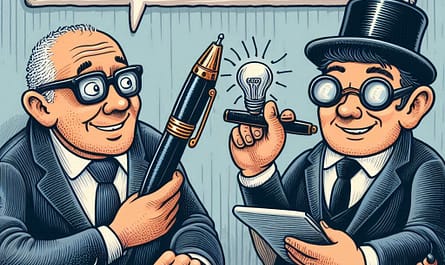
We are living through a technological revolution — a storm fueled by artificial intelligence (AI) that is reshaping industries, redefining workflows, and reimagining how we interact with the world. From automating repetitive tasks to creating groundbreaking innovations, AI is no longer the future — it’s the present.
But like any storm, AI brings both opportunity and chaos. Businesses that embrace this technological shift will ride the wave of transformation, while those who ignore it risk being swept away. The question is: Are you ready to navigate the storm?
⚡ The Calm Before the Storm: How We Got Here
Not too long ago, AI was the stuff of science fiction — the brainchild of imaginative thinkers who envisioned a world where machines could think, learn, and adapt like humans. Early AI models were rudimentary, capable of performing only narrow tasks with limited flexibility.
Then came machine learning (ML) and deep learning (DL), changing the game entirely. These technologies allowed AI to go beyond rule-based systems, enabling it to learn from data, identify patterns, and improve over time. As data grew exponentially, AI models became smarter, more efficient, and more capable of performing tasks that once required human intuition.
From recommendation algorithms on Netflix to AI chatbots revolutionizing customer service, AI rapidly transitioned from a niche technology to an essential tool driving global industries. The storm had begun.
🌪️ The Eye of the Storm: Where We Stand Now
Today, AI is at the center of almost every industry. Whether you realize it or not, AI touches your life daily:
✅ Healthcare: AI diagnoses diseases faster and more accurately than humans, revolutionizing early detection and personalized treatment plans.
✅ Finance: AI analyzes vast datasets in seconds, identifying trends and minimizing risks for investors.
✅ Retail: AI powers personalized shopping experiences, inventory management, and customer service with seamless precision.
✅ Marketing: AI optimizes ad targeting, content personalization, and predictive analytics, helping brands reach the right audience at the right time.
✅ Manufacturing: AI automates production lines, detects defects, and improves supply chain efficiency.
But while AI enhances efficiency, productivity, and innovation, it also disrupts traditional business models. The companies that thrive are those that don’t just adopt AI but learn how to integrate it effectively into their core operations.
💡 The Lightning Strikes: AI’s Game-Changing Capabilities
AI is no longer just about automation. It’s about augmentation — enhancing human potential by taking over repetitive, data-heavy tasks and freeing people to focus on creativity, strategy, and innovation.
Here’s how AI is transforming industries:
- Data-Driven Decision Making 📊
AI processes vast amounts of data in real-time, identifying patterns and providing actionable insights. Businesses that leverage AI-powered analytics make faster, smarter decisions that give them a competitive edge. - Hyper-Personalization 🎯
AI analyzes user behavior to deliver personalized experiences at scale. Whether it’s suggesting products, tailoring content, or predicting customer needs, AI helps brands build deeper connections with their audiences. - Predictive Maintenance ⚙️
In industries like manufacturing and logistics, AI detects potential equipment failures before they happen. This proactive approach minimizes downtime, reduces maintenance costs, and improves overall efficiency. - Enhanced Creativity with AI Collaboration 🎨
Generative AI models like ChatGPT and DALL-E are enhancing human creativity, allowing artists, writers, and marketers to brainstorm ideas, draft content, and design visuals at lightning speed. - AI-Powered Cybersecurity 🔐
With cyber threats evolving, AI monitors, detects, and neutralizes potential threats in real-time. AI’s predictive capabilities enable organizations to stay one step ahead of cyber attackers.
🌊 Riding the Waves: Challenges to Overcome
As exciting as AI’s potential is, navigating this storm isn’t without challenges. Companies that rush into AI adoption without a solid strategy often face unexpected obstacles:
- Data Privacy and Ethics
AI thrives on data, but ensuring that data is collected, stored, and used ethically is critical. Mishandling data can lead to privacy breaches and regulatory fines. - Bias and Fairness
AI models are only as good as the data they’re trained on. If that data reflects biases, AI can perpetuate discrimination in decision-making. Ensuring fairness in AI models is an ongoing challenge. - Workforce Disruption
Automation powered by AI often displaces traditional roles, raising concerns about job loss and reskilling. Organizations must invest in training their workforce to adapt to AI-driven changes. - Security Risks
AI systems can be vulnerable to adversarial attacks where malicious inputs trick the model into making wrong decisions. Robust security protocols are essential to safeguard AI systems.
⚙️ Mastering the Storm: Strategies for Success
To thrive in this AI-powered era, businesses need more than just cutting-edge technology. They need a strategic approach that integrates AI effectively while addressing ethical, operational, and security concerns.
Here’s how to master the AI storm:
- Start Small, Scale Smart
Begin with pilot projects that demonstrate AI’s value. Learn, iterate, and gradually expand AI adoption across different functions. - Invest in Data Quality and Governance
High-quality, clean data is the foundation of effective AI. Establish data governance policies to ensure that AI models are trained on accurate and unbiased data. - Upskill Your Workforce
Prepare your team for the AI revolution by offering reskilling and upskilling programs. Employees who understand AI’s capabilities will be better equipped to work alongside it. - Prioritize Ethics and Transparency
Implement AI with a responsible approach. Ensure transparency in AI decision-making processes and commit to ethical AI practices. - Continually Monitor and Optimize
AI isn’t a one-and-done implementation. Continuously evaluate AI models, fine-tune them based on new data, and adapt to changing business needs.
🌈 Beyond the Storm: What the Future Holds
AI is not slowing down. As advancements in AI models, natural language processing, and robotics continue to unfold, the possibilities are endless. Future innovations will redefine industries, reshape economies, and challenge the way we think about work, creativity, and human potential.
But remember — AI is a tool, not a replacement. The organizations and individuals who succeed will be those who understand how to harness AI’s power while retaining the human touch.
⚡ Final Thoughts: Adapt, Innovate, and Thrive
The AI storm is here, and it’s only getting stronger. Businesses that embrace change, prioritize innovation, and integrate AI strategically will not just survive — they will thrive.
Are you ready to ride the AI storm and navigate the future of innovation? 🌪️🤖



